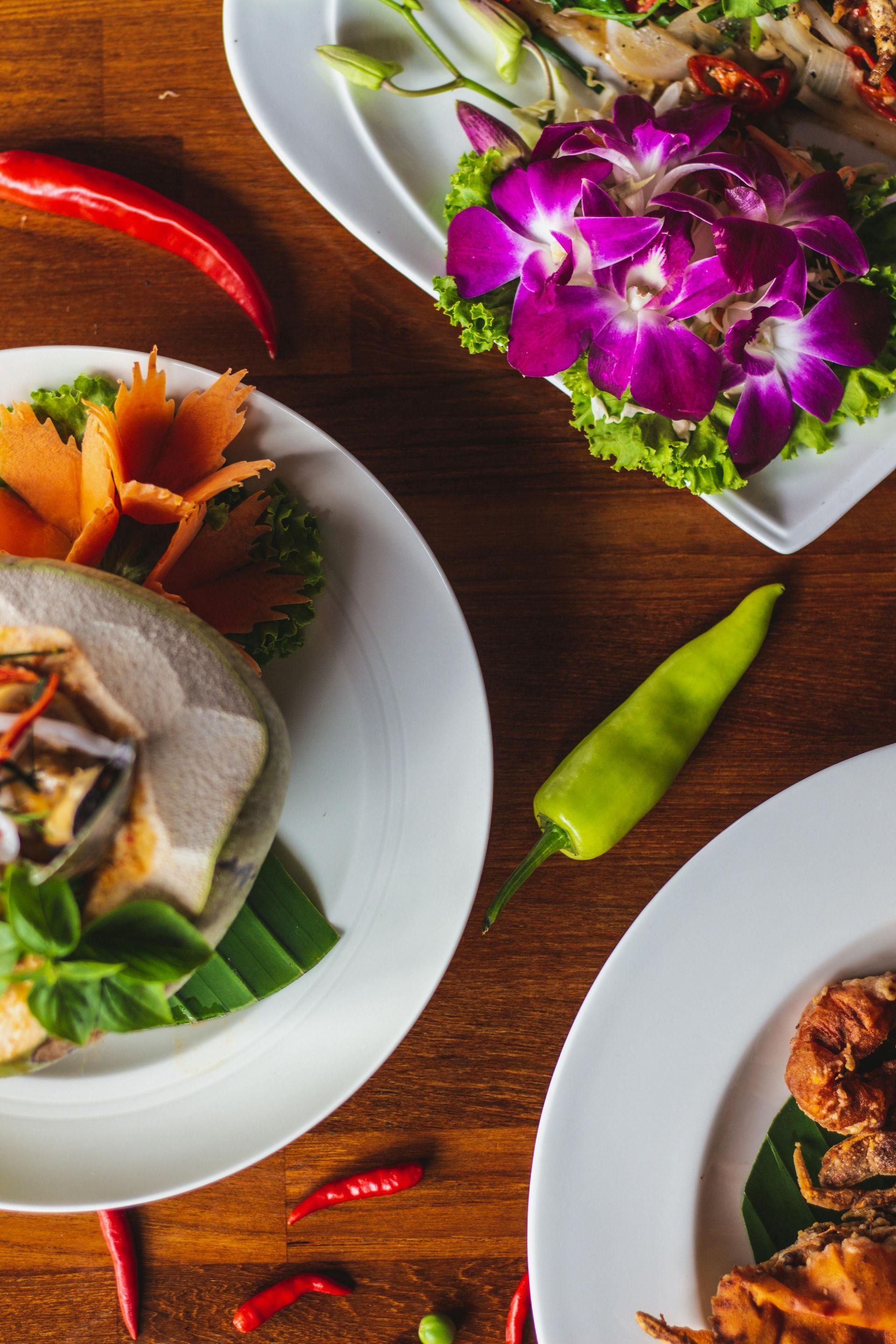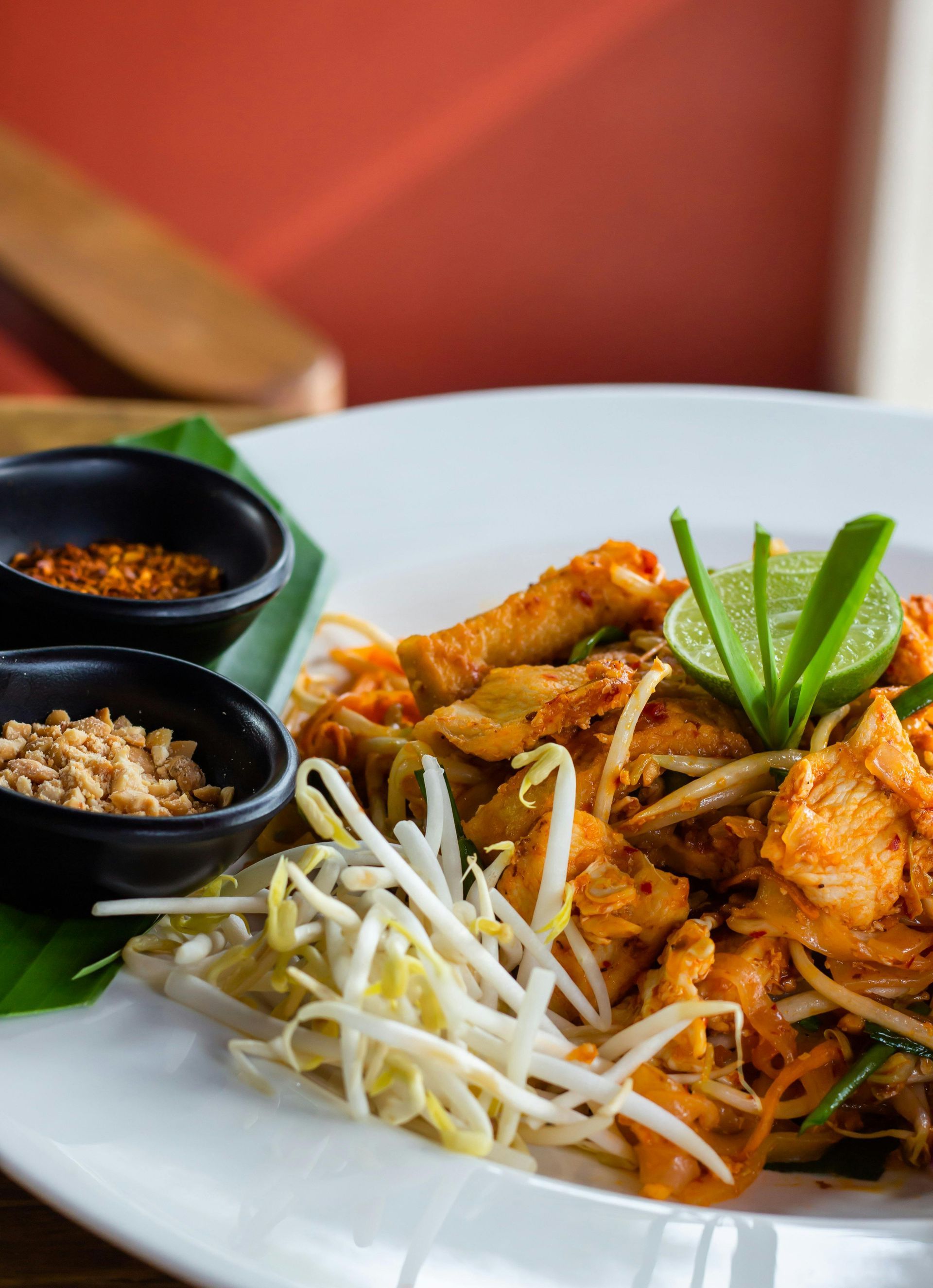700 Nutt Rd, Phoenixville, PA 19460 (Located in the Giant shopping plaza)
Phone: (610) 917-9943
Restaurant Hours
Lunch Tuesday-Sunday
11:00 AM - 2:30 PM
(CLOSED MONDAYS)
Dinner Tuesday-Thursday 5:00 PM - 9:30 PM
Dinner Friday - Saturday 5:00 - 10:00 PM
Dinner Sunday 5:00 - 9:00 PM
(CLOSED MONDAYS)
700 Nutt Road, Phoenixville, PA 19460
(Located in the Giant Plaza - Free Parking)
Traditional Thai Cooking: A Journey Into The Culture And Methods
Traditional Thai cooking is a vibrant reflection of the country’s diverse geography, rich history, and cultural influences. Each region of Thailand brings its own unique ingredients and methods, creating a culinary landscape that is as varied as it is flavorful. From the bustling streets of Bangkok to the quiet countryside villages, Thai food is rooted in tradition, emphasizing fresh, local ingredients and age-old cooking techniques.
At the heart of traditional Thai cooking are a handful of key ingredients that create the bold flavors Thai food is known for. Fresh herbs like lemongrass, kaffir lime leaves, and Thai basil are used generously to infuse dishes with aromatic flavors. Chilies, in varying levels of heat, are central to many recipes, providing the signature kick found in dishes like Tom Yum and green curry.
Fish sauce and shrimp paste are staples that give Thai dishes their salty, umami richness, while palm sugar balances these savory notes with sweetness. Coconut milk is another common ingredient, particularly in the southern regions, where it adds creaminess to curries and desserts. Rice is the foundation of most Thai meals, with sticky rice particularly popular in the north.
Ingredients that Define Thai Cuisine
Thai cooking often revolves around simple, time-honored methods. Stir-frying, steaming, and grilling are some of the most common techniques, often done quickly over high heat. Wok cooking is central to stir-fries like Pad Kra Pao, where meat and vegetables are tossed with sauces and herbs to create fast, flavorful meals.
In rural areas, charcoal grilling is a method that has been used for centuries, especially for dishes like Gai Yang (grilled chicken) and Moo Ping (grilled pork skewers). The use of mortar and pestle is also a traditional technique in preparing pastes and sauces, especially in dishes like Som Tum (papaya salad) and curries. This method crushes the ingredients together, releasing their natural oils and creating a more intense flavor.
Traditional Cooking Methods
Thai cuisine varies greatly depending on the region, with each area having its own distinct flavors, ingredients, and cooking styles.
Northern Thailand, with its cooler climate and mountainous terrain, is known for milder, herbal flavors. Sticky rice is a staple here, often served alongside Sai Oua (spicy sausage) and Khao Soi, a rich coconut-based curry noodle dish. Northern dishes are generally less spicy and more reliant on herbs than chilies.
Northeastern Thailand (Isaan) is famous for its bold, spicy flavors, heavily influenced by neighboring Laos. Here, dishes like Som Tum and Larb (a spicy minced meat salad) are common, with sticky rice served as the main accompaniment. Isaan cuisine often uses grilled meats and incorporates fermented ingredients like fish sauce and shrimp paste for deeper flavors.
Central Thailand, home to Bangkok, is known for its balance of flavors—sweet, sour, salty, and spicy. The fertile plains of the region provide an abundance of rice, fruits, and vegetables. Green Curry, Pad Thai, and Tom Yum are quintessential Central Thai dishes, showcasing the perfect balance of flavor that defines this region’s cuisine.
Southern Thailand is known for its bold, fiery curries and heavy use of coconut milk. The coastal geography provides a bounty of seafood, and dishes like Gaeng Som (sour curry) and Massaman Curry reflect both local and foreign influences, especially from Malaysia and India. Southern Thai food is often the spiciest in the country, with liberal use of fresh chilies and turmeric.
Regional Differences in Thai Cuisine
Today, traditional Thai cooking continues to thrive, both in Thailand and around the world. Despite the rise of modern conveniences and fusion cuisine, many Thai households still prepare meals the old-fashioned way, using fresh ingredients and techniques passed down through generations. Whether cooked over a charcoal grill in a village home or whipped up in a busy urban kitchen, Thai food remains a celebration of the country’s history, geography, and enduring love for bold, balanced flavors.
Restaurant Hours
Lunch Tuesday-Sunday
11:00 AM - 2:30 PM
(CLOSED MONDAYS)
Dinner Tuesday-Thursday 5:00 PM - 9:30 PM
Dinner Friday - Saturday 5:00 - 10:00 PM
Dinner Sunday 5:00 - 9:00 PM
(CLOSED MONDAYS)



